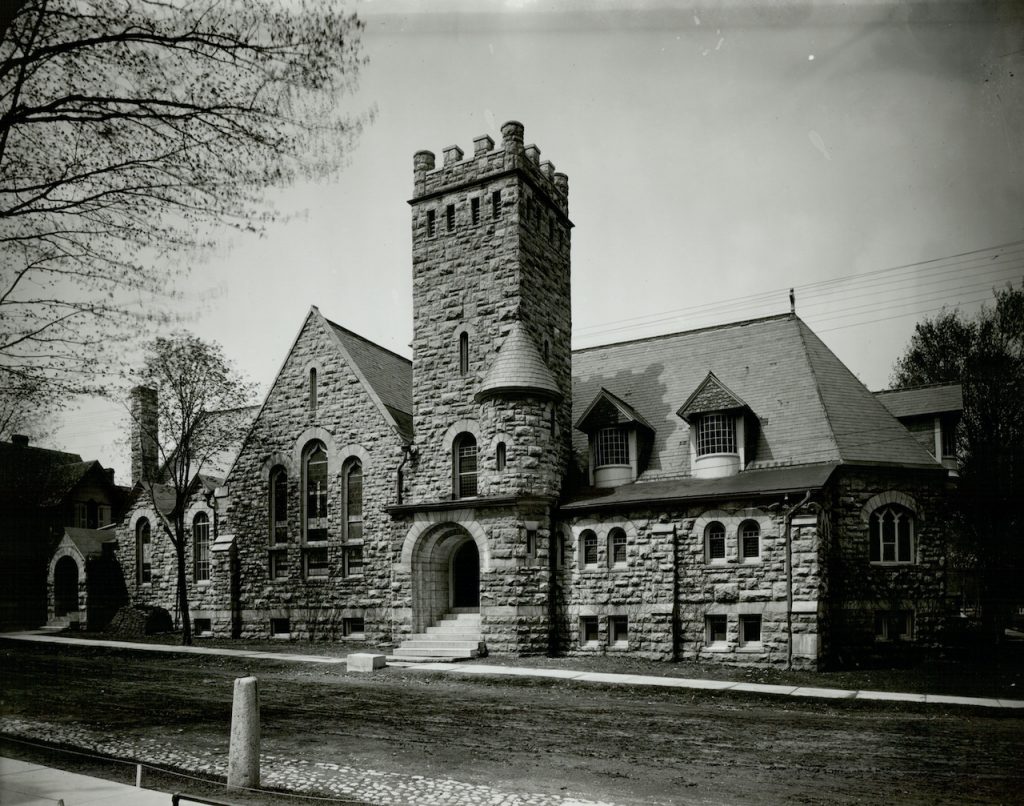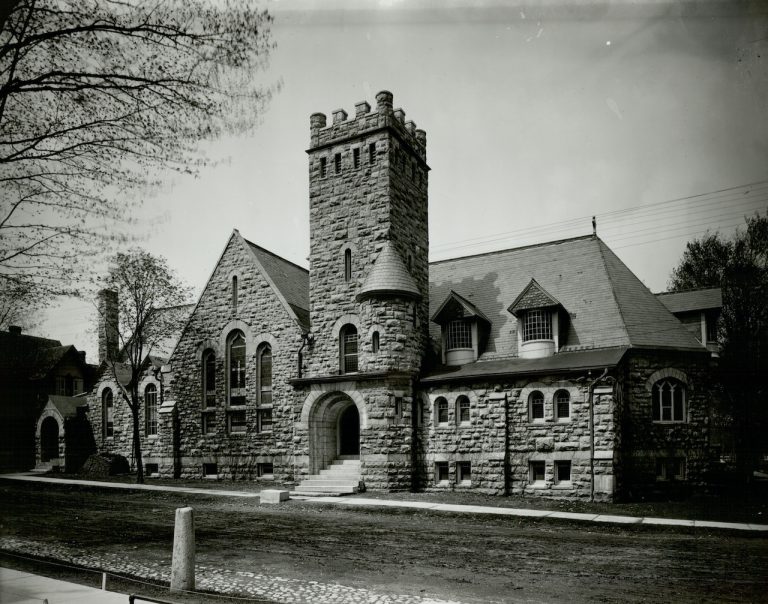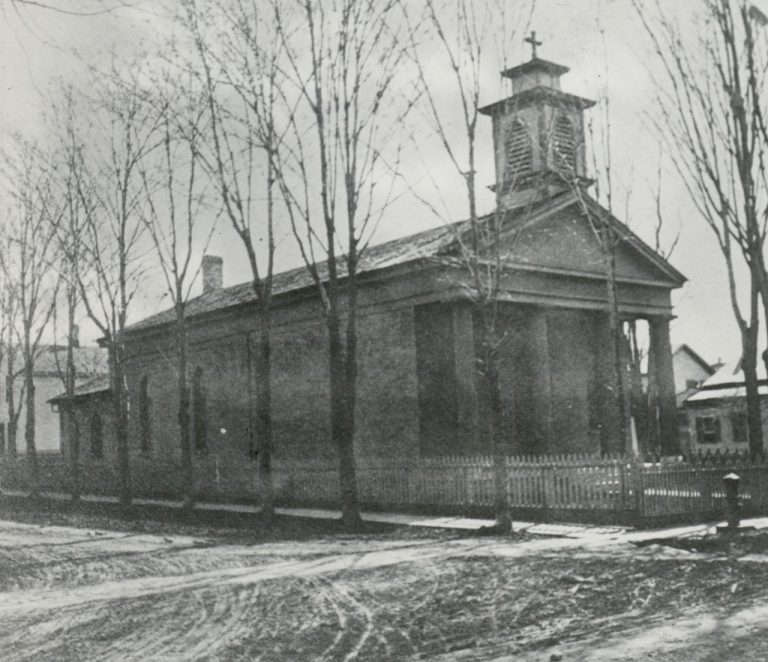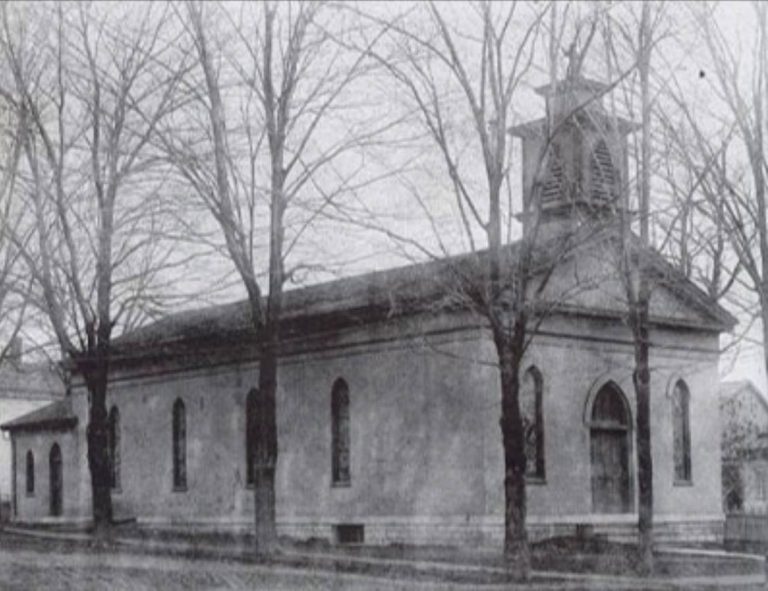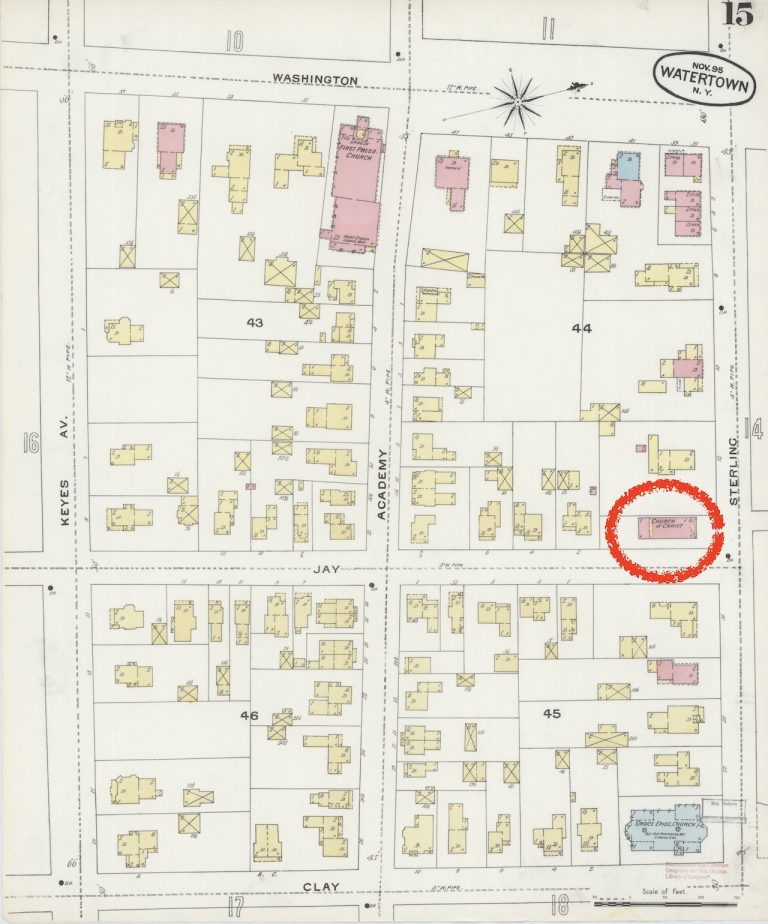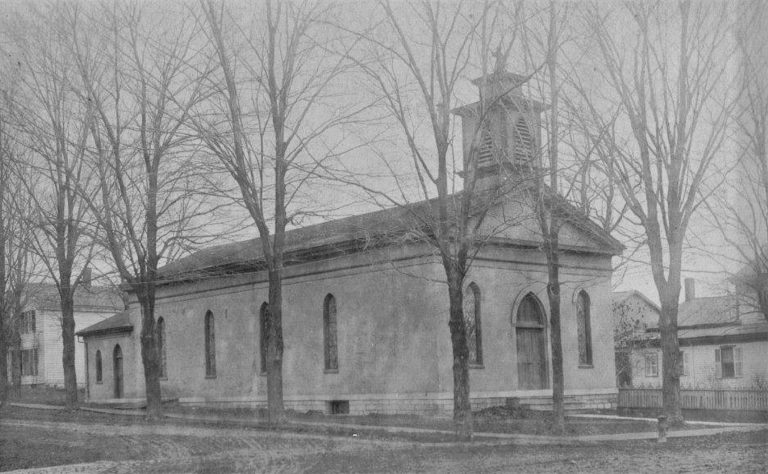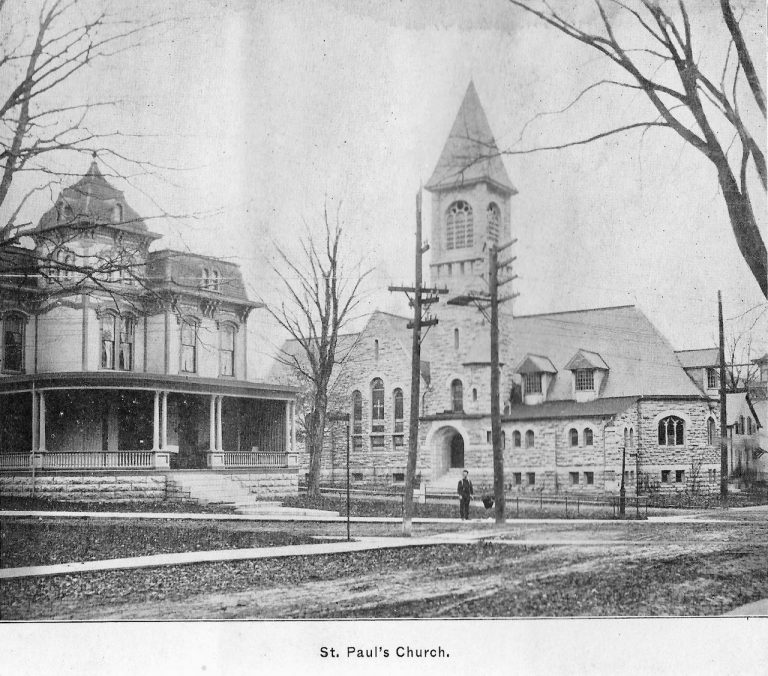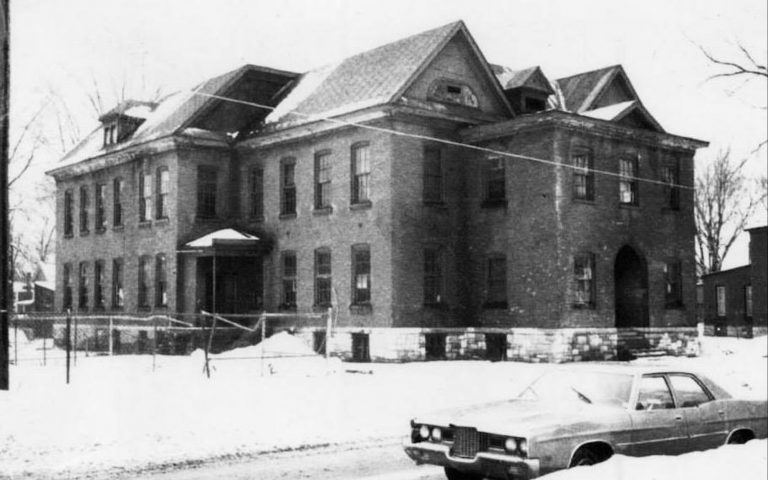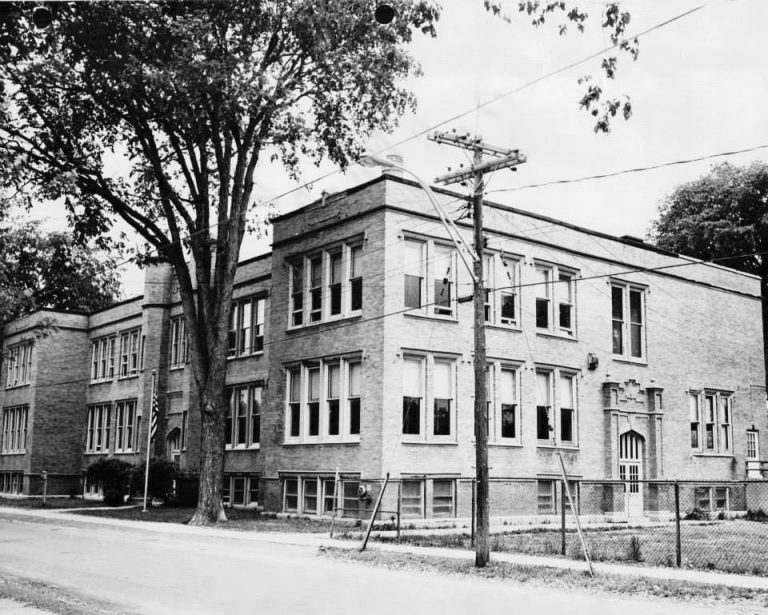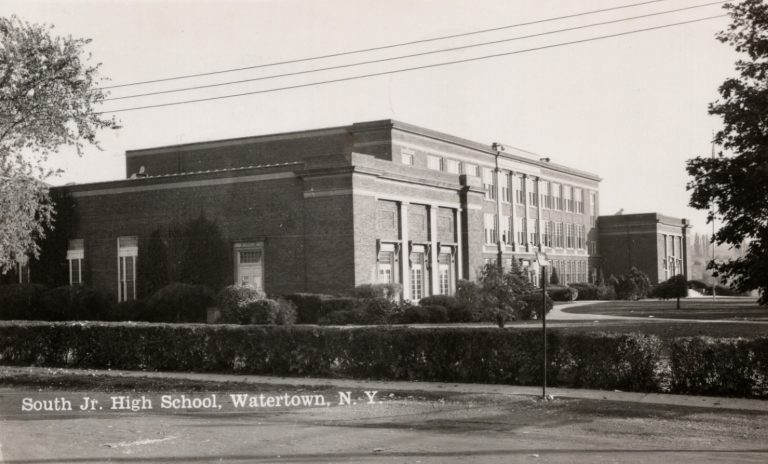The Little Sterling Street School House Becomes Grace Church
The history of Grace Church that was on the corner of Jay (now Gotham) and Sterling Streets begins with it as the Sterling Street School. The schoolhouse was erected in 1846, but it wasn’t the first structure to serve the purpose of the Sterling Street School on that site.
In the early 1800s, streets were used for demarcation before “wards” designated specific areas or neighborhoods. Located north of State Street, at various times, were schools on Factory and Lamon Streets. South of State Street, a void was left when the Academy building was sold to the Presbyterian Church in 1820. A new school was to be built, but there were differences of opinion as to where it should be constructed. The district was then divided, using State Street as the boundary.
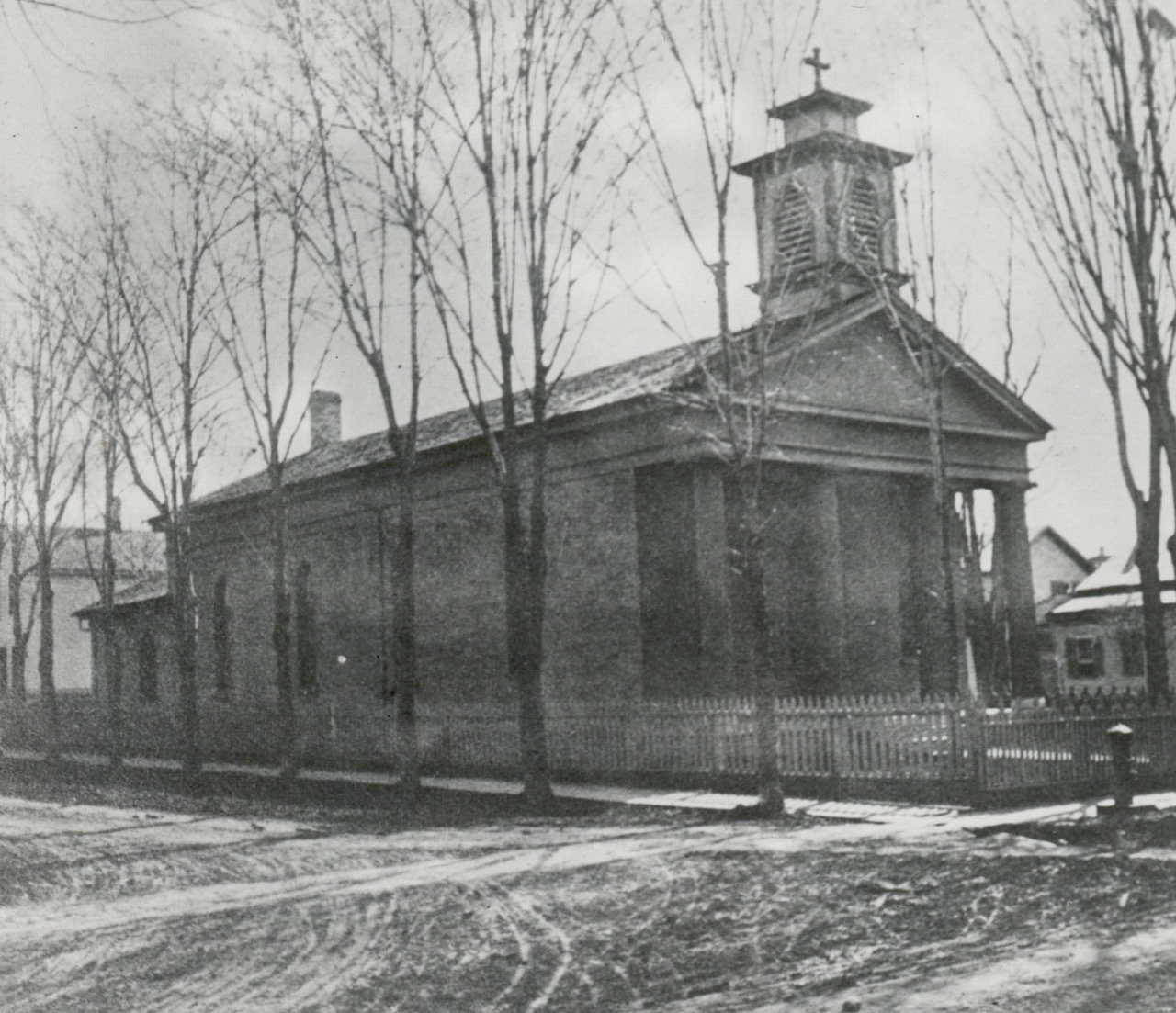
According to the March 28, 1890, Watertown Daily Times–
In 1823, the portion of the district lying south of State street purchased the lot now occupied by Grace Church on the corner of Jay and Sterling Streets, and erected a stone school-house thereon.
In 1846, the school would be replaced with a “new” Sterling Street School was considered a “model schoolhouse, a vast improvement over any other one in Watertown or its vicinity at that time,” according to the Watertown Daily Times. The school would face Sterling Street and be located in the same block as the new Watertown High School that would be built in 1904. Though the two structures would be from different eras, the Sterling Street School would still be present for several years after the new high school opened.

Around 1865, a congregation for a new church, Grace Church, would hold mass at the County Court House, which had construction completed in 1862 on the corner of Arsenal and Benedict (Sherman) Streets. While meeting there, the church’s officials would seek a permanent home. Likewise, the village of Watertown would be addressing rumors in the Sept. 1, 1865, New York Daily Reformer–
A Misapprehension – Some of our citizens seem to suppose that there is to be under the new order of things, but one primary school in our village. This is in error. There will be at least five such schools; one in the Arsenal Street School House, one on Lamon Street, one in the Sterling Street School House, one at the Red School House on Massey Street, one at the Sand Banks, one at the Old Academy, and many more as may be necessary to accommodate all the members of the ever interesting and hopeful class referred to.
Eight months later, in May of 1866, the New York Daily Reformer would state, “Resolved, that Messrs Merwin, Sigourney, and Sherman be a special committee to perfect arrangements for the sale of Sterling Street Schoolhouse and lot, and the purchase of the Old Academy and lot.” Meanwhile, Grace Church would be duly incorporated on August 14, 1867.
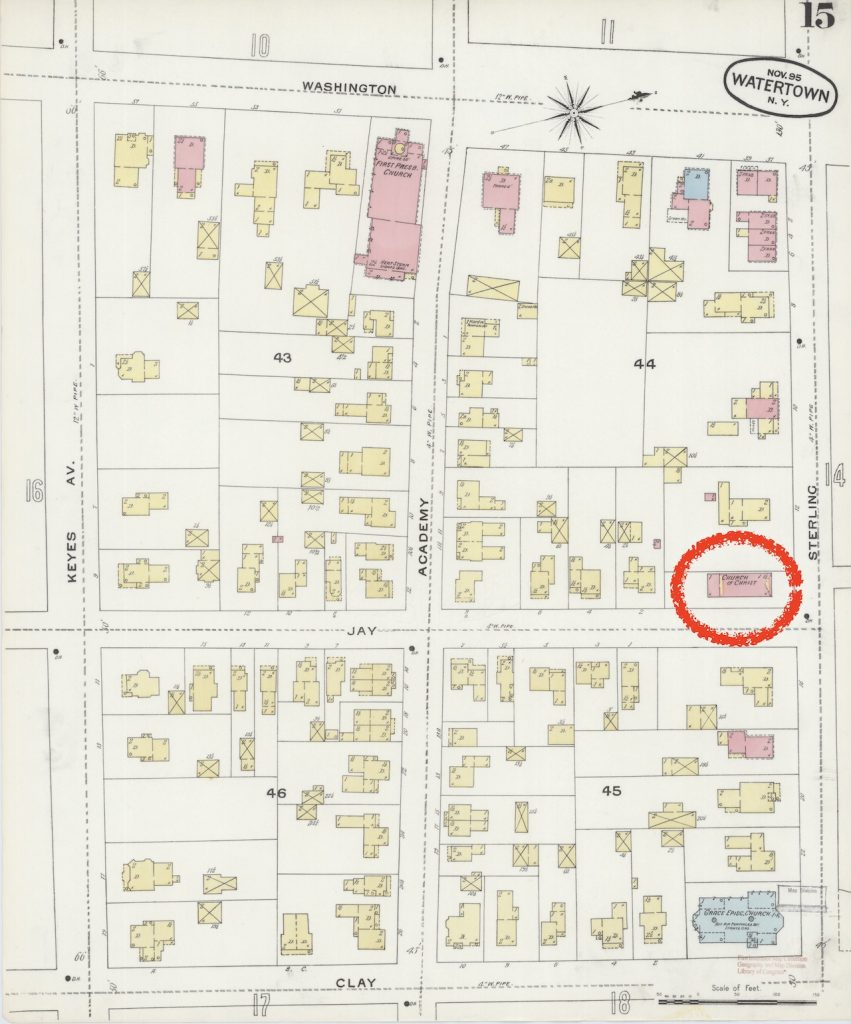
By March 14, 1868, Grace Church had purchased the schoolhouse, but there were issues that necessitated the creation of a new bill–
Mr. Bigelow has recently introduced a bill to vest the title of the public school buildings of Watertown, with certain exceptions, in the village of Watertown; the purpose of the act being to remove ambiguity in the act of 1865, so as to convey to Grace Church a clear title to the Sterling Street School House, which that society has purchased.
The bill ratifying the conveyance of the Sterling Street School to Grace Church, and annexing a new district to be graded schools of Watertown has become law.
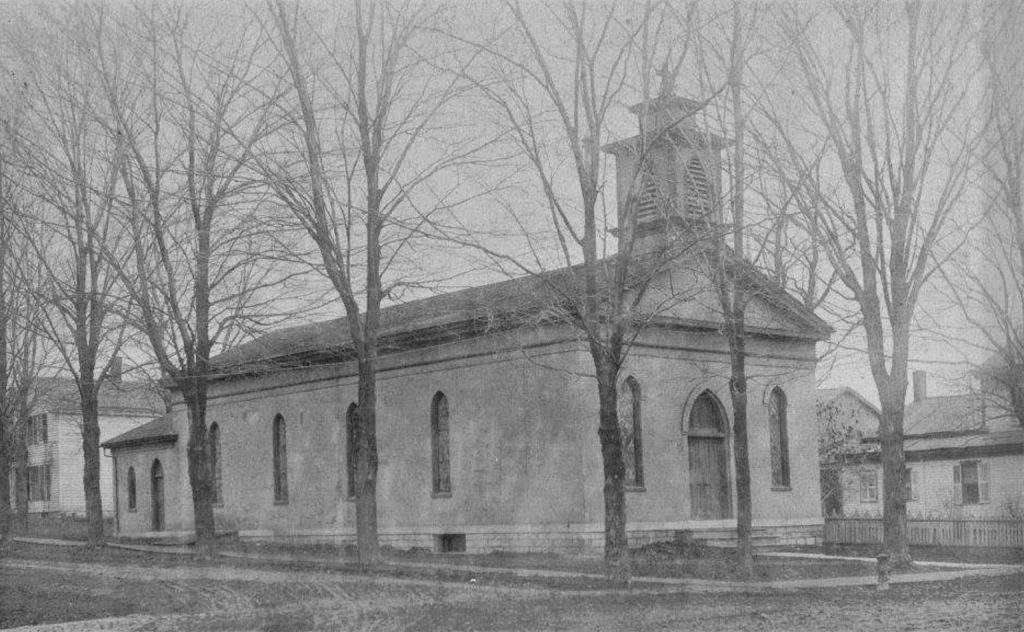
Even then, it would take up until a month before the Great Flood of 1869, itself a month before Watertown’s incorporation as a city, to finalize the sale. As was usual with property transactions, the New York Daily Reformer would print the details on March 20, 1869–
Resolved, That we recommend to the Trustees of the Village of Watertown to sell the school house and lot situated on the corner of Sterling and Jay Street, in said village, to the Rector, Church Wardens and Vestrymen of Grace Church of Watertown, in the County of Jefferson, for the sum of two thousand dollars, that sum having been agreed upon by the said Board of Education and a committee of the said Church; that that sum having actually been paid therefor.
Adjourned.
H. H. Smith, Clerk.
In 1881, ministers of the church and those from Trinity Church would help establish the House of the Good Samaritan which would find its meager beginnings in a rented house on the corner of Holcomb and Ten Eyck Streets. By the late 1880s, Grace Church would be looking to build a home to call its own. The Watertown Daily Times would report on June 1, 1889–
A NEW CHURCH BUILDING
Grace Episcopal Church to Have a Handsome New Place of Worship Within a Short Time
The Grace Church people have purchased from Mrs. Goodale 15 feet additional frontage on Sterling Street, thus securing a total frontage of over 80 feet. It is understand that plans for erection of a new church to be built of Gouverneur marble are now approved, and the Hon. G. A. Bailey, who is a member of the building committee, stated yesterday that work would be begun today.
Over a year and a half ago an effort was made to raise funds sufficient to erect a new church, and the preliminary sketch of a handsome edifice was exhibited; but the project apparently came to nothing, owing to various causes, prominent among which was the loss, either by death or removal, of an important number of active supporters.
Since that time the accessions have been encouraging large, the seating accommodation at times being lamentably inadequate, and the growing needs of the church further the best reason and most urgent demand for a new building.

In 1891, construction of the new Grace Church would be complete, sitting one block further down from the old Grace Church on the corner of Sterling and Clay Street and Franklin Streets. Most people are familiar with this church today as having been the home to St. Paul’s Episcopal Church. Grace Church changed its name to this in 1897. As written in The Growth of a Century, by John A. Haddock and Eli Thayer–
The new church was fully completed and opened for divine service. The church is a fine building, built in a combination of different styles of architecture, harmoniously blended, in which the Romanesque prevails. It will seat 550 people. An interesting fact in connection with the church is that, with few exceptions, this beautiful edifice and all its appointments stand as an example of what local talent can accomplish.
The former schoolhouse and home to Grace Church would service two more churches, the Baptist Church and then the Church of Christ, until 1906. Within a few years afterward, it was razed and replaced with the current apartment building that sits on the corner today.
